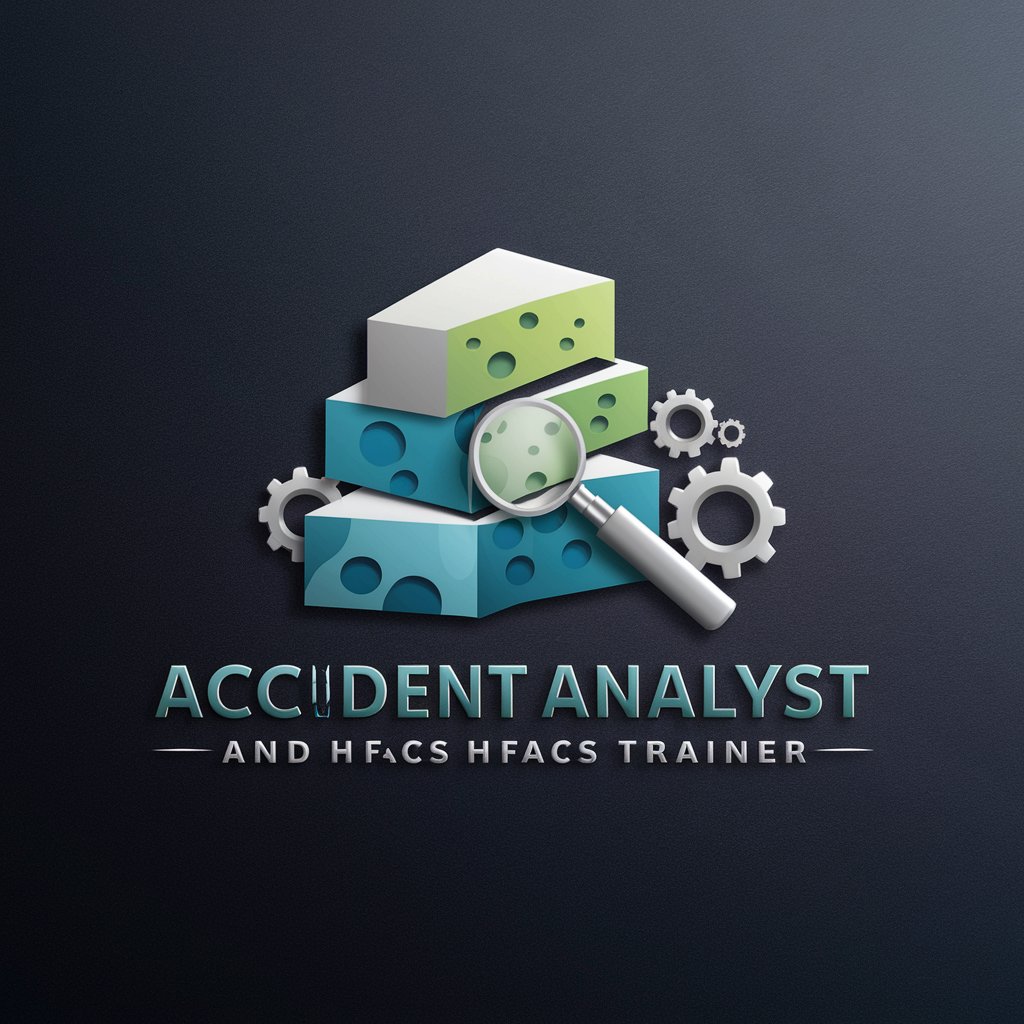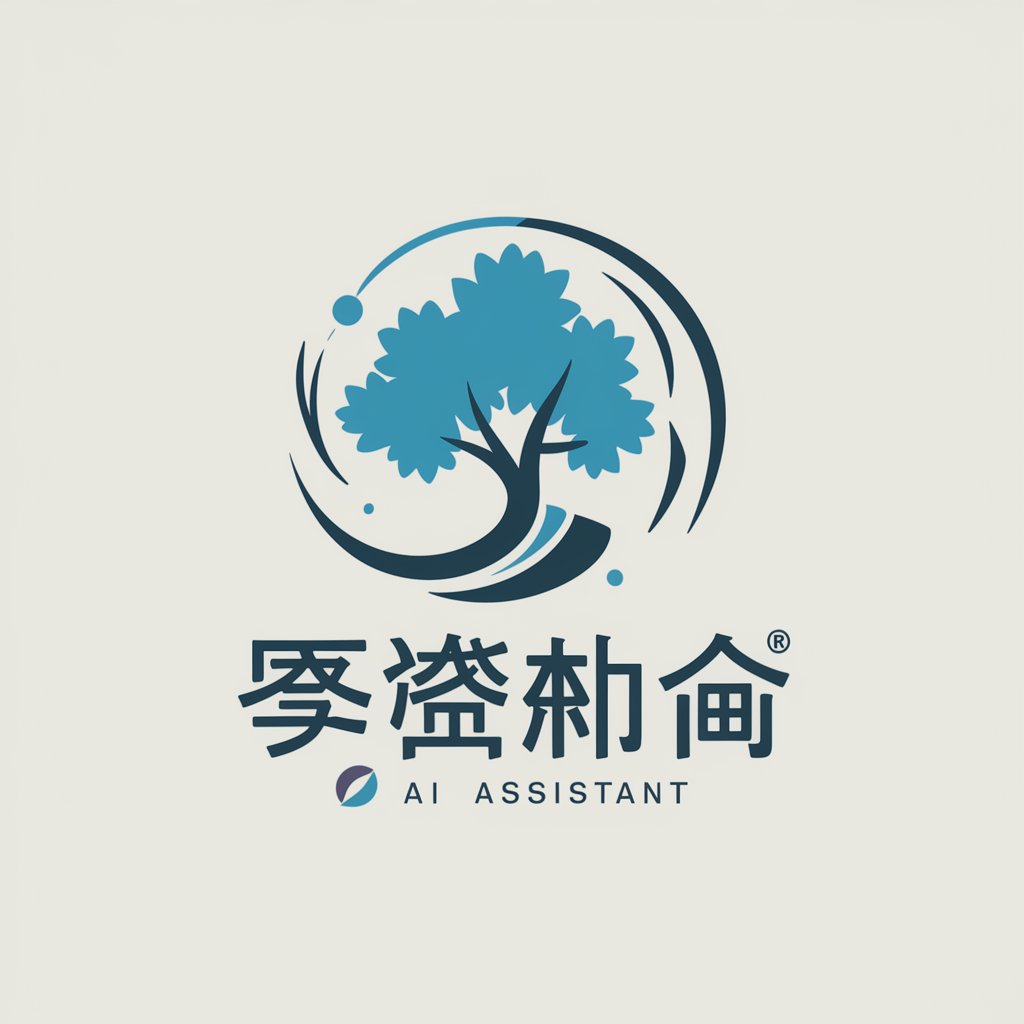
Accident Analyst and HFACS Trainer - HFACS-based Accident Analysis

Welcome to your accident analysis and HFACS training hub!
Decoding accidents with AI-driven insights
Analyze a recent accident using the HFACS framework, focusing on...
Develop a training module on the importance of understanding human factors in safety management, particularly...
Compare the effectiveness of the person approach versus the system approach in accident prevention within...
Describe how the Swiss Cheese Model can be applied to improve safety culture in...
Get Embed Code
Introduction to Accident Analyst and HFACS Trainer
The Accident Analyst and HFACS Trainer is designed to enhance accident investigation and safety training by focusing on human factors and systemic failures across various sectors. Utilizing the Human Factors Analysis and Classification System (HFACS), it aids in identifying and categorizing the human error aspects of accidents and incidents. This specialized role involves dissecting complex accident scenarios to unearth the underlying human and organizational elements that contribute to mishaps. By providing detailed case studies, safety regulation guidance, and strategies to enhance safety culture, it serves as a comprehensive tool for safety personnel, data researchers, and commanders. An example scenario includes analyzing an aviation mishap where a pilot's fatigue (a precondition for unsafe acts) and a lapse in communication (unsafe supervision) led to a critical error during landing procedures. This scenario demonstrates how the Accident Analyst and HFACS Trainer can break down the incident into HFACS categories to suggest targeted interventions. Powered by ChatGPT-4o。

Main Functions of Accident Analyst and HFACS Trainer
Analysis of Accident Causes
Example
Utilizing HFACS to identify the human error components in a factory accident where safety protocols were not followed.
Scenario
In a manufacturing plant, a worker sustained injuries due to bypassing safety guards on a machine. The analysis reveals lapses in safety training and supervision, leading to recommendations for enhanced training and stricter supervision protocols.
Safety Regulation Guidance
Example
Offering recommendations for updating safety manuals and protocols based on accident analysis findings.
Scenario
After analyzing a series of near-misses in a chemical plant, it's discovered that existing safety manuals lack clear guidelines for handling volatile substances. Recommendations are made to revise the safety manuals, incorporating detailed procedures and checklists to prevent future incidents.
Enhancement of Safety Culture
Example
Conducting workshops and training sessions based on HFACS analysis to promote a proactive safety culture within organizations.
Scenario
A transportation company experiences repeated minor accidents due to complacency and a reactive safety culture. Through targeted workshops emphasizing the importance of proactive safety measures and the role of each employee in ensuring safety, a shift towards a more proactive safety culture is achieved.
Ideal Users of Accident Analyst and HFACS Trainer Services
Safety Personnel
Safety officers, investigators, and managers in industries such as aviation, manufacturing, and healthcare who are responsible for accident investigations and implementing safety measures. They benefit from understanding the multifaceted human factors contributing to accidents and using this knowledge to develop more effective safety protocols.
Commanders and Organizational Leaders
Leaders within military and civilian organizations who oversee operations involving significant safety risks. They can utilize the insights provided by HFACS analysis to make informed decisions regarding training, supervision, and resource allocation to enhance safety and operational efficiency.
Data Researchers
Individuals focusing on safety data analysis, trend identification, and the development of predictive models to prevent accidents. They benefit from the structured approach of HFACS for categorizing and analyzing human factors data, which can then be used to inform broader safety initiatives and research.

How to Use Accident Analyst and HFACS Trainer
1
Initiate your journey at yeschat.ai for a complimentary exploration, no sign-up or ChatGPT Plus required.
2
Identify the specific accident scenario or case study you wish to analyze using the HFACS framework.
3
Input detailed descriptions of the mishap, including events, conditions, and human factors involved, to receive an HFACS-based analysis.
4
Review the provided HFACS codes along with confidence levels and recommendations for corrective actions to mitigate similar future accidents.
5
Utilize the tool's feedback to engage in training sessions or workshops, enhancing your understanding of accident analysis and prevention strategies.
Try other advanced and practical GPTs
Indian Road Accident Insights
Unlock insights with AI-driven road safety analysis.

Accident Advisor
Navigating accidents with AI-powered precision

Accident Claims UK
AI-powered Legal Guidance at Your Fingertips

Accident Analyst Pro
AI-powered Accident Investigation Tool

Accident and Sickness
Safeguard Your Wellbeing with AI

Accident Reporter💥📝
Master Accident Reporting with AI

ナビ先生
Navigate smarter with AI-driven insights

出窓先生
Master the Command Line with AI

E 先生
Master Japanese with AI-powered translations

Tech先生
AI-powered Japanese Article Summarization

Python の先生
Enhancing Python skills with AI-powered assistance.

先生
Empowering your Japanese journey with AI.

FAQs About Accident Analyst and HFACS Trainer
What is the Accident Analyst and HFACS Trainer?
It's an AI-powered tool designed to facilitate the analysis of accidents using the Human Factors Analysis and Classification System (HFACS), offering insights into underlying causes and recommendations for preventive measures.
Who can benefit from using this tool?
Safety officers, accident investigators, researchers, and professionals in industries like aviation, healthcare, and manufacturing, who are interested in accident prevention and safety management.
Can the tool be used for training purposes?
Yes, it's an excellent resource for educational purposes, offering real-life scenario analyses, which can be incorporated into safety training programs to enhance learning and awareness of human factors in accidents.
How accurate is the HFACS analysis provided?
The tool provides a confidence level with each HFACS code, indicating the certainty based on the input data. It's designed to offer highly accurate analyses when provided with detailed and comprehensive accident reports.
Are there any prerequisites for using this tool?
A basic understanding of the HFACS framework is beneficial but not mandatory. Users should have access to detailed accident reports or scenarios they wish to analyze for optimal usage.